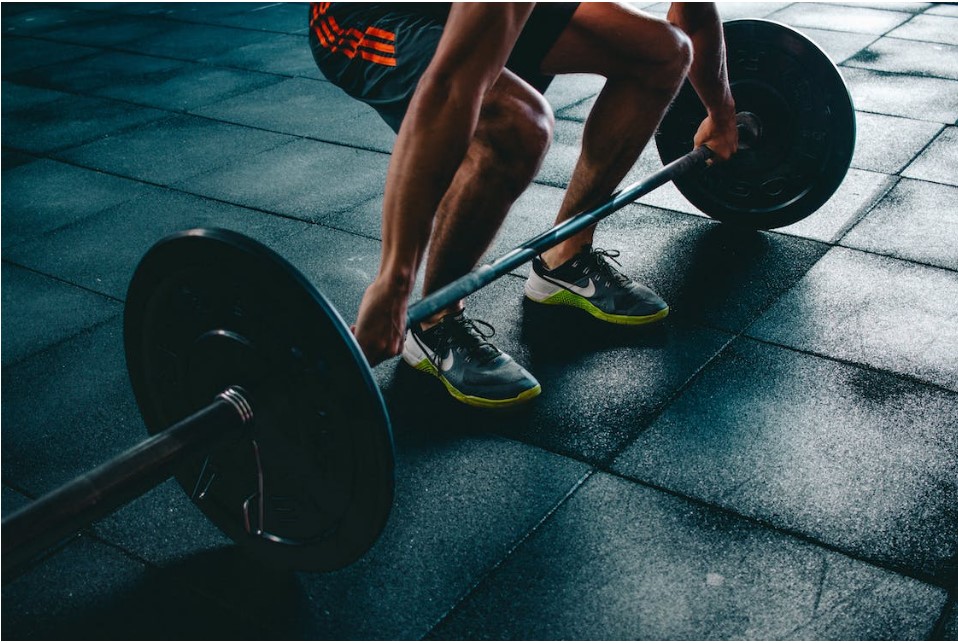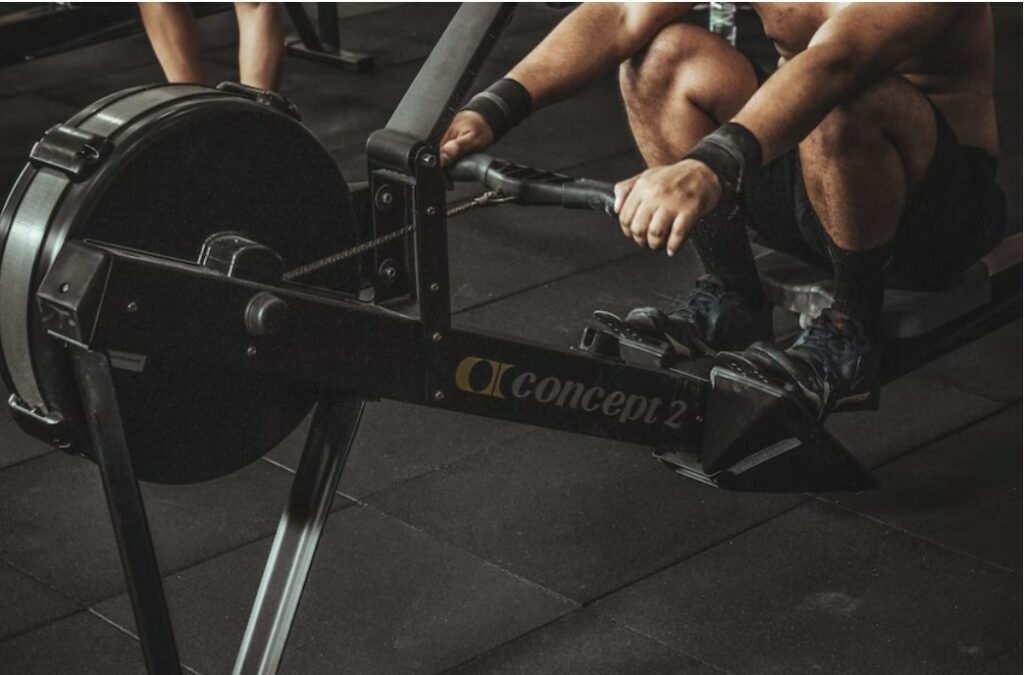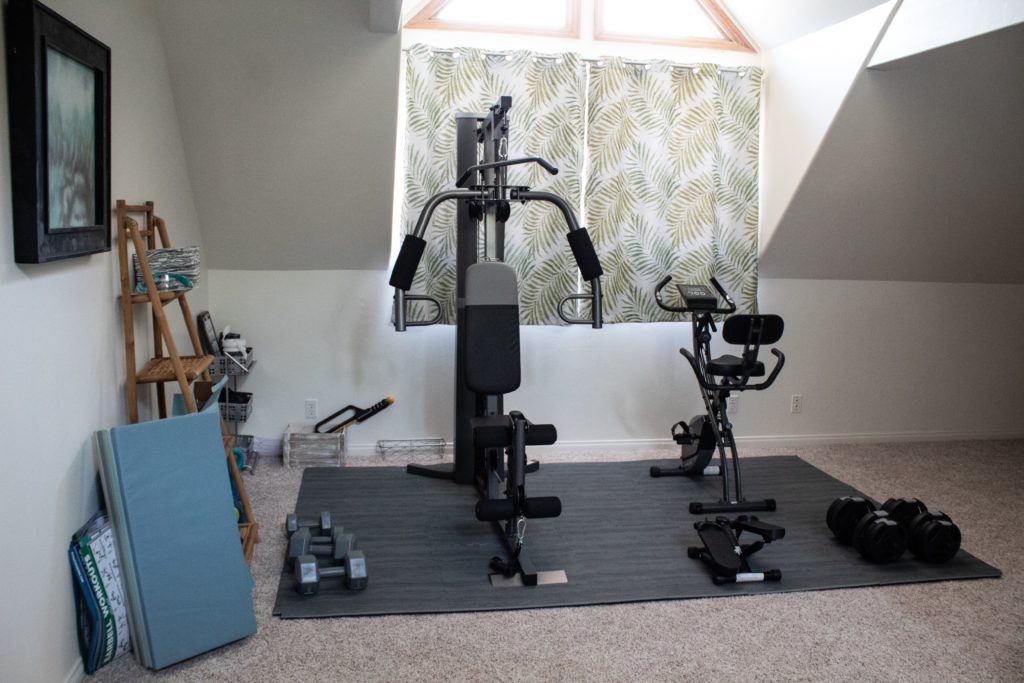A home gym is no longer only a luxury for the well-to-do and renowned, according to recent developments. It’s an approach to life. And for many people, building a fully equipped at-home gym is still a top goal. However, there is one piece of equipment you really must have right at your disposal: a good, gym-friendly, exercise machine mat. This guide will introduce you to everything you need to know about exercise machine mats.
What are exercise machine mats for

Working out at home, whether for men or women, is becoming more and more prevalent, and you see more individuals installing treadmills, gym bars and bicycles at home. This is where an exercise mat comes in useful. Generally speaking, workout mats provide a cushioned, grippy surface underneath that helps protect your body and your equipment. They can also facilitate floor exercises by reducing the amount of slipping that occurs, as they offer an injury-free surface.
Exercise machine mats serve the same purpose as regular workout mats, however in direct contact with the machine itself. They can be referred to as “Gym flooring” for having the same purpose, which is to prevent injuries and reduce machine noises. They also offer safe traction and subfloor protection.
Features of exercise machine mats
Exercise machine mats ought to be hardy, easy to install, and protective. When shopping for it, you should consider a few things such as the material used in the making and which type of workout it is intended for. Exercise mats are designed to handle heavy weights and intense activities.
Density
Unlike Pilates or yoga mats, exercise machine mats should be thick. The majority of weight-training gyms will typically feature rubber gym floors. This material is often between ¼” to ½” thick when it comes to weightlifting activities. Most weight lifting gyms have a thickness of 5/16″ although gyms intended for heavy lifting may have up to ½” of thickness.
The mat’s thickness should match the type of activity you plan to do. Choose a thicker mat to protect the floor if you want to perform any type of weight training where dumbbells and plates will be striking the ground. If you plan to use a mat every time you exercise, you might prefer a thinner mat that is simple to roll up and store.
Grip
Definitely one of the most important traits of machine mats, and here is why you should consider it. Depending on what flooring or mats you got, there is always a chance of workout machine slippage. It can lead to disastrous accidents, that is why precautions must be taken to prevent harmful incidents. Equipment mats must be anti-slip, which is why you must focus on the surface.
The surface’s quality is the same as the bottom’s. Others have a rough or ribbed surface, while some mats are flat on both sides and rest flush on the ground. More grip will be offered by mats with studs or raised tread, but these features can collect dirt more quickly and may be more difficult to clean than a smooth surface.
Vibration
Heavy machinery’s usage in gyms results in noise during workouts, and working out in a chaotic environment is not everyone’s aim at the gym, or even at home. That’s why equipment mats should be anti-vibration. Anti-vibration mats isolate vibrations, cut noise, and protect against shock forces to safeguard flooring, people, and the exercise machines themselves.
Durability
Durability is the main trait of gym equipment mats. Although it depends on from one material to another, but most mats are considered durable enough. For instance, vinyl and rubber are the most durable choices for your flooring. Durability is a vital option because you do not want to constantly change your mats so you utterly should consider how long-lasting your mats can be before purchasing them.

Material
Gym mats can be of two primary types: thick rubber construction or foam construction. Although they might not be as comfortable, rubber mats are more resilient than foam ones. They work well for exercises that need a lot of movement, weights, or exercise apparatus.
However, foam rubber usually gets weakened by the equipment’s heavy weight and constant usage, so it produces flecks all over the machine on the long term.
Despite being less sturdy, lighter foam mats may be preferable for some users when stretching, performing body weight exercises, or performing lighter workouts. Foam choices are typically less expensive as well because they are so light, but most specialists do not recommend them. They can also be quite toxic to deal with in the long term.
Different materials of exercise machine mats
Cork
Cork is a fantastic alternative for mats because of a variety of advantages. Its honeycomb-like design makes it comfortable. It can also make your home-gym a more safe place to be because it is extremely resilient and even provides thermal and acoustic insulation. Because cork is obtained from living trees, it is eco-friendly.
Many gym users lean on cork flooring because its composition naturally insulates against sound in gyms and home gyms. The structure of trapped air in cork makes noises from footsteps, athletes leaping, and even dropped weights more quiet.
Purpose:
Cork’s composition naturally insulates against sound in gyms. The structure of trapped air in cork makes noises from footsteps, athletes leaping, and even dropped weights more quiet.
Foam
Foam floor tiles come in a huge range of colors, patterns, and designs and have many appealing qualities like comfort and cost. The majority are made of closed-cell, elasticized EVA foam, which is soft and flexible like rubber.
The surface texture of the pebble top keeps athletes safe and reduces slippage by maximizing traction. Although the tiles themselves are lightweight, they are incredibly resilient and can be used in both home gyms and heavily used commercial venues. These mats are actually so durable that they may serve as horse stall mats as well.
Purpose: Waterproof and stain-resistant foam mats are needed underneath exercise machines. They have anti-fatigue characteristics that let you work out longer and harder. Foam mats work well as shock absorbers for exercise machines and also have a stiffness that permits fast motions. Additionally, they are simple to install and set up underneath equipment.
Rubber
Rubber mats give you the widest range of possibilities when it comes to workout machine mats. The majority of rubber mats can readily sustain the weight of heavy equipment without suffering any harm, and rubber gym flooring is particularly tough and long-lasting.
Rubber is frequently used in home-gym flooring because it does not only provide some shock absorption, but it also makes for a floor that is highly durable and can endure the heavy traffic of commercial gyms. It’s a cost-effective option that comes in rolls, mats, and tiles so you can pick the one that best suits your requirements. Rubber also provides thermal and acoustic insulation, which enhances everyone’s experience during working out.
Purpose: Rubber flooring offers the ideal amount of compression, preventing machine damage and safeguarding hard floors from damage when heavy equipments are dropped. It’s also very durable.
Tips to pick the right mat
Now that we have showcased everything important about exercise machine mats, here are some useful tips when shopping for the right mat for you.
Quality
The first thing you need to consider when shopping for equipment mats is quality. Like previously mentioned, quality of exercise machine mats differ. Each gym user finds comfort using a certain quality. However, rubber works best for weather casual workout mats pr exercise machine ones. Being eco-friendly, rubber mats allow you to use your exercise equipment comfortably, and have smooth workouts without worrying about accidents or floor damage. PS: it’s always better to shop for mats in person so you make sure the quality if eligible and touchable. Sometimes pictures online trick you.
Size
When it comes to size, most medium to large size exercise equipments, such as elliptical machines, treadmills, and spin bikes, fit on a 36″ x 84″ mat (91 x 213 cm). For instance, a treadmill mat typically measures 6.5 feet long by 3 feet wide. Many ordinary and inexpensive treadmills can fit in this, but larger, more expensive versions would not. Several treadmills have a 7-foot length. So, in order to get the correct size, make sure to measure your workout equipment beforehand.

Price
Prices of exercise machine mats range between $30 and $150. Depending on length, quality, and material used in the making. You can get your equipment mat online or in sports shops. Most exercise machine mats are available in retail or wholesale sporting goods stores. In the market there are thousands of accessories to pick from, however, remember to select the ones created by more well-known and renowned companies.
How to maintain your exercise machine mat
Although an exercise machine mat protects you, the floor, and the workout equipment, it also needs proper care to last for longer. Typically, you roll up your sweaty workout mat and put it in a hidden corner after a workout or yoga session. By doing so, you create an ideal environment for microbial growth that includes moisture, bacteria, filth, lack of airflow, and total darkness. And that is the same thing you do to machine mats. After every workout, we often feel way too tired to take care of the mat and clean it. Here are some pointers on how to maintain the cleanliness of the exercise machine mats.
Material check
It’s essential to keep track of the kind of material you’re using. For instance, there are some dos and don’ts while using rubber flooring. A range of cleaners are available. But there are various varieties of rubber. Avoid cleaning them with acidic substances like vinegar. The mat will be demolished through, accelerating its deterioration. Additionally, be sure to use a nylon mop and to use rubber that won’t mold when exposed to too much water. Cotton mops frequently leave behind little pieces.
Sanitize
After each use, it’s best to quickly wipe your mat down. You can choose to use a commercial mat cleaner, which typically contains a combination of essential oils for various cleaning and odor-reduction properties. Make your own cleaning solution for the most cost-effective option. To assist clean, deodorize, and sterilize the mat, mix one part white distilled vinegar to three parts water. If desired, you can add a few drops of essential oils.
Odourless mat
Even though exercise machine mats do us great favors, they still get dirty and produce horrible smells. Rubber for instance, whether newly installed or used, has an unpleasant smell but good news! You can easily get rid of it. Make sure you use neutral pH cleaners and wipe each mat separately from both sides. The process to make your mats odourless can be frustrating and slow at first, but the smell will slowly dissipate.
Keep your mat dry
Use more paper towels to dry your mat after cleaning it, or leave the windows open to let it air dry. A mat can also be hung outside to dry, but avoid sun exposure because too much time in the sun or heat might harm the mat. To get the most exposure to the outdoors, mats work best when hung over a chair or porch railing. If the mat isn’t being used, try to store it in an area with sufficient ventilation.
Loot at Reviews
Looking to invest in a new recumbent bike? Here’s our consolidated list of guides and reviews to help you pick the perfect one that best suits your every need and lifestyle.
Mats for Treadmills
- Best Treadmill Mat
- Treadmill Mat For Carpet
- Treadmill Mat For Hardwood Floors
- Treadmill Noise Reduction Mat
- Treadmill Soundproof Mat
- Anti Vibration Treadmill Mat
- Noise Reducing Treadmill Mat
- Top Treadmill Mat
- Sole Treadmill Mat
- Under Treadmill Mat
- Mat For Treadmill To Protect Floor
- Supermat Treadmill Mat
- Treadmill Anti Static Mat
- Rubber Cal Treadmill Mat
- Mat To Put Under Treadmill
Mats for Bikes
- Best Bike Mat
- Peloton Bike Mat
- Exercise Bike Mat
- Spin Bike Mat
- Best Bike Trainer Mat
- Exercise Bike Mat For Carpet
- Mat For Spin Bike On Carpet
- Stationary Bike Mat
- Best Mat For Peloton Bike
- Mat For Indoor Bike
Mats for Elliptical
Conclusion
Knowing everything about workout machine mats is considered the first step before beginning your buying journey. There are many factors to consider when looking for the right exercise machine mat. It is always better to consider your personal needs and what your coach tells you.
